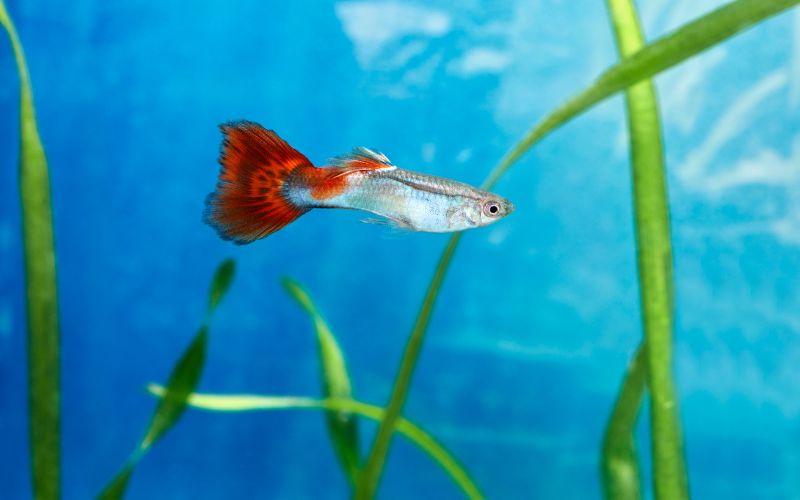Where do guppies lay their eggs


Guppies are one of the most popular freshwater fish species around the world for their vibrant colors, hardiness, and active personalities. These tropical fish are native to South America and have been introduced to other regions such as the Caribbean, Florida, and Asia. These small-sized fishes are also known as millionfish or rainbowfish, and they are an excellent choice for novice aquarists as well as seasoned hobbyists.
When it comes to reproduction, guppies are prolific breeders and can produce up to 200 fry in a single pregnancy. Their reproductive habits have made guppies popular for research on sexual selection, evolution, and genetics. In this article, we will explore where guppies lay their eggs, how to care for guppy eggs, and tips for raising guppy fry.
To understand the process of guppy reproduction, it’s necessary to know the anatomy of both male and female guppies. Guppy females are slightly larger than males, and they have a triangular anal fin called a gravid spot. This spot becomes more prominent as the female develops eggs. Male guppies are more colorful and have a longer dorsal fin, which they use for courtship displays.
The female guppy has an ovipositor, a tube-like structure through which the eggs pass from the ovaries to the outside. The anal fin of the male has a modified structure called a gonopodium, which is used to deposit sperm into the female during mating.
Guppies are viviparous fishes, which means that they give birth to live young. In guppy reproduction, the process starts with courtship displays from males to attract females. Male guppies swim around the female, flashing their colorful fins, and body, and perform a dance to win the female’s attention. If the female is receptive, the male will deposit sperm into the female through his gonopodium.
After successful fertilization, the eggs develop inside the female’s body, and she carries them for about 28 to 35 days. During this period, the female guppy will show physical changes, such as a bigger size, a more prominent gravid spot, and a darkened anal area. When the female is ready to give birth, the fry will emerge from her ovipositor in small groups.
Since guppies are viviparous, they do not lay eggs. However, some guppies can retain unfertilized eggs inside their bodies, which can develop into a condition known as egg-binding. Egg-binding can be life-threatening for the female guppy, and it requires immediate medical attention from a veterinarian.
Guppy fry are tiny and vulnerable to predation, which means that they require a safe environment to grow and develop. The ideal habitat for guppy eggs and fry should meet the following criteria:
As mentioned earlier, guppies do not lay eggs, but they give birth to live young. However, female guppies can retain unfertilized eggs in their bodies, which can develop into egg-binding. When it comes to giving birth, guppies prefer quiet and secluded areas where they can feel safe.
Guppies are sensitive to their environment, and several factors can affect their egg-laying behavior. These factors include:
Caring for guppy eggs requires attention to water quality, tank setup, and feeding. Here are some tips for caring for guppy eggs:
Guppy fry are relatively easy to care for, but they require specific conditions to develop successfully. Here are some tips for hatching and raising guppy fry:
Raising guppy fry requires time and dedication, but it can be a rewarding experience. Here are some tips for raising guppy fry:
In conclusion, knowing where guppies lay their eggs is essential for successful breeding and care of these popular freshwater fish. Guppies are prolific breeders, and their reproductive habits have made them a popular choice for scientific research. By understanding guppy breeding and egg-laying behavior, we can protect guppy populations and promote responsible breeding practices to ensure their long-term survival.